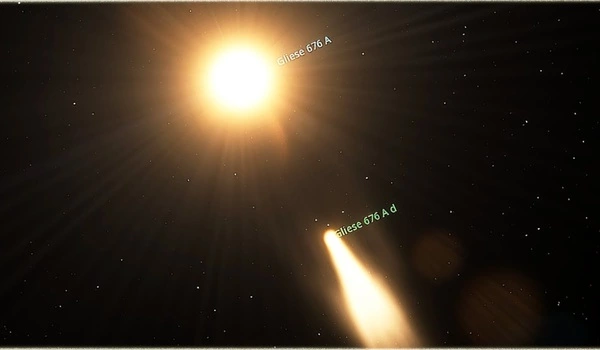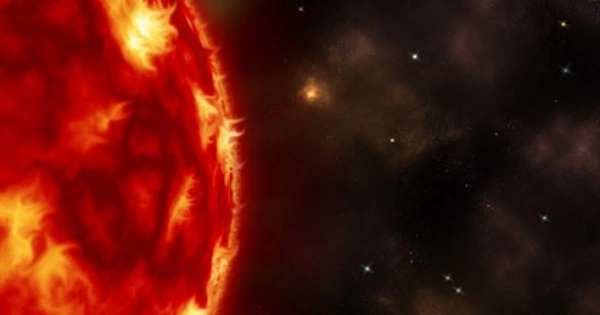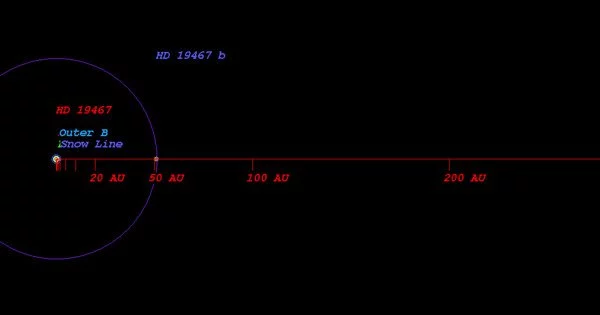Gliese 676 is a binary system of red dwarfs with an estimated minimum separation of 800 AU and an orbital period of more than 20,000 years. It is roughly 54 light-years away in the constellation Ara. A gas giant was discovered in orbit around the primary star in 2009, and its confirmation in 2011 was accompanied by a strong indication of a companion; the second gas giant was identified in 2012, along with two much smaller planets.
Gliese 676 is a binary star 52.1 light-years away from the Sun. It is a two-star system. This system contains a number of known exoplanets.
Planetary system
The first discovered planet, b, is a super-jovian that was first identified in October 2009. In 2011, the planet was formally announced, along with the first recognition of a trend that was not caused by the companion star. Even after fitting a planet and a trend, the residual velocities remained around 3.4 m/s, which was significantly greater than the instrumental errors of around 1.7 m/s. This suggested that there were other bodies in orbit, though nothing more could be said at the time.
In early 2012, the star was used as a test case for the HARPS-TERRA software, which was designed to improve data reduction from the HARPS spectrometer. Even with significantly lower margins of error on the data, less data was available than in 2011. Nonetheless, the team arrived at a very similar conclusion to the previous team using a planet model and a trend. The residual velocities were still somewhat excessive, lending credence to the presence of other bodies in the system, though no conclusions could be drawn.

The rest of the radial-velocity measurements used in 2011 were made public between the time of the previous analysis and June 2012, allowing them to be reduced using HARPS-TERRA. These were then subjected to a Bayesian probability analysis, which had previously been used to discover HD 10180 I and j, confirming planet b and providing the first characterization of planet c, which had previously only been described as a trend. Following the introduction of the first two signals, the next most powerful signal occurred at around 35.5 days, with an analytic false alarm probability of 0.156. The false alarm probability was found to be 0.44 percent after 104 trials, which is low enough to be included as a periodic, planetary signal.
With a minimum mass of around 11 Earths, the planet falls somewhere between Super-Earths and gaseous, Neptune-like bodies with a mass of 10 Earths. Following the acceptance of the third signal, a strong peak at 3.6 days emerged. It was immediately accepted despite having a much lower false alarm probability than the previously accepted body. It is a small Super-Earth with a minimum mass of around 4.5 Earths.
This system currently holds the record for the widest range of masses in a single planetary system, as well as a hierarchy reminiscent of the solar system, with the gas giants at great distances from the star and the smaller bodies much closer-in. There are two Super-Jupiter planets: ‘b‘ with a period of 1052 days (2.9 years) and minimum mass of 6,7 MJ, and ‘c‘ with a period of 7340 days (20.1 years) and a mass of 6,8 MJ.
















